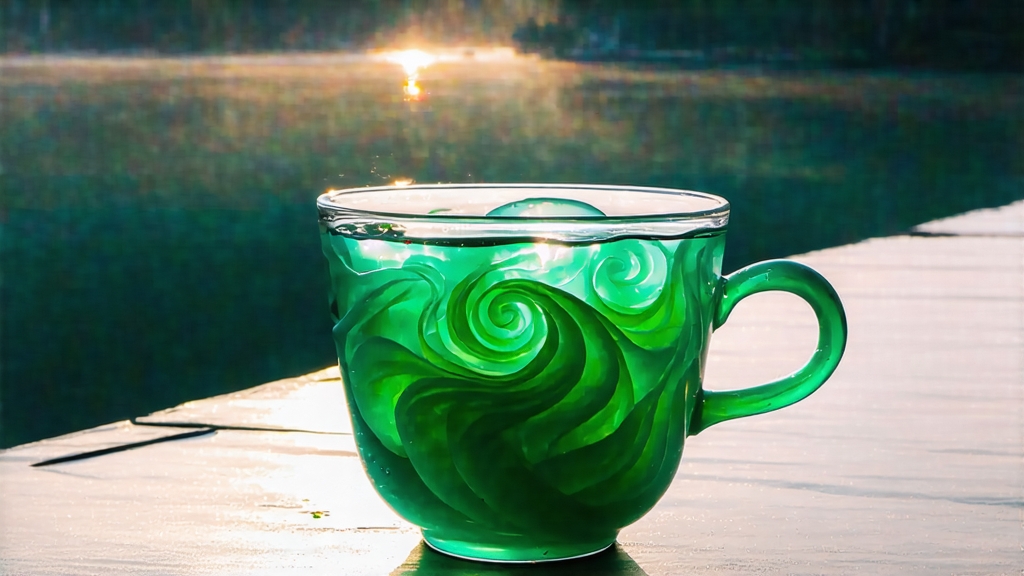
Biluochun, whose name translates literally to “Green Snail Spring,” is one of China’s ten most celebrated teas, yet it remains a quiet jewel outside specialist circles. Produced only in a micro-zone where Jiangsu’s Taihu Lake meets the Dongting and Xishan peninsulas, this green tea is prized for an almost impossible combination of delicacy and intensity: the leaf is so tiny that 70,000 buds yield barely 500 g of finished tea, yet the liquor releases a fragrance that connoisseurs liken to a fusion of fresh orchid, white peach and young bamboo after rain.
History whispers rather than shouts. The earliest written record appears in the Tang dynasty’s lost monograph “Tea Canon of Wu County,” quoted in the 1639 county annals: “The monks of Shuiyue Temple pick a curled tea on Qingming morning; its aroma drifts across the lake and startles magpies.” By the late Ming the tea had become a tribute item; Kangxi Emperor, visiting Suzhou in 1699, tasted it beside the lake, renamed it Biluochun for its snail-shell shape, and sealed its fate as an imperial luxury. Farmers still tell the legend that the original mother bushes grew among wild loquat and plum trees whose blossoms perfumed the leaf so thoroughly that no further scenting was ever needed.
Botanically, Biluochun is almost exclusively the small-leaf “Fuding Da Bai” clone, but local growers distinguish five micro-cultivars—Xiangshan, Qingming, Yuye, Qixia and the ultra-rare Zhiye—each tuned to a particular slope aspect above the lake. The Xishan south-facing terraces, wrapped in morning mist rising from Taihu, give the sweetest, most floral profile, while north-facing Dongming gardens yield a slightly grassier, more mineral cup. All, however, must be harvested before the Qingming festival, when the bud is still a soft spear less than 2 cm long and carrying one just-unfolding leaf.
Crafting Biluochun is a race against dew. Picking starts at 5 a.m.; by 9 a.m. the baskets are already in the village workshop where three master steps—shaqing (kill-green), cuotiao (rolling) and tiemei (refine-fire)—must be finished before dusk. The shaqing wok is heated to exactly 180 °C, but the tea master lowers it to 140 °C within 90 seconds by swirling a damp cloth across the iron surface; this instant drop locks in the jade color yet prevents the nutty “cooked” note that mars lesser greens. While the leaf is still pliable it is cupped in two hands and rubbed against the wok in a spiral motion—hence the signature curl—then flicked into the air so that each bud cools before the next touch. The final tiemei is almost meditative: 40 minutes over a 60 °C charcoal ember, the tea master rolling the leaf in a bamboo tray shaped like a moon, listening for the soft rustle that signals 6 % residual moisture. When done correctly the finished tea looks like tiny snail shells dusted with the faintest silver down; rub three buds between your fingers and they release a scent so vivid it feels like biting into a ripe apricot.
Water is the first ingredient the traveler must respect. Taihu itself is too mineral for brewing its own tea; instead, local sommeliers collect spring water from Tiger Hill 30 km away, whose moderate TDS of 80 ppm flatters the leaf without dulling its high notes. Heat to 75 °C—never above 80 °C—then pour 150 ml over 3 g of leaf in a tall cylindrical glass. The classic Suzhou method demands three infusions: the first, 45 seconds, is called “awakening the snail,” a pale jade liquor that smells of fresh peas and lifts the palate like cool wind; the second, 25 seconds, is the “peak,” where amino acids peak at 3.2 %, gifting a brothy umami wrapped in orchid; the third, 50 seconds, is the “echo,” lighter yet longer, leaving a sweet cavity at the back of the throat that lingers ten minutes. A fourth infusion is possible if the drinker is patient, but by then the aroma has migrated from fruit to river-stone, a quiet farewell.
Tasting Biluochun is best done in silence. Hold the cup at eye